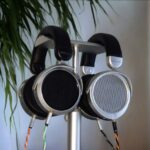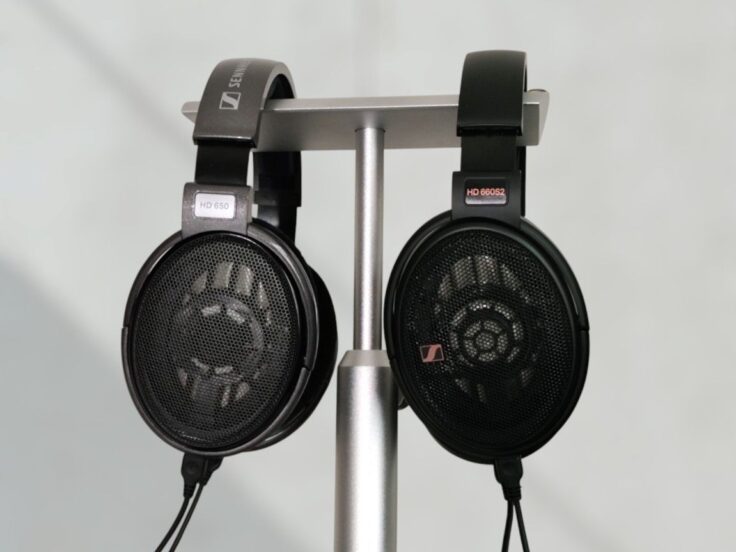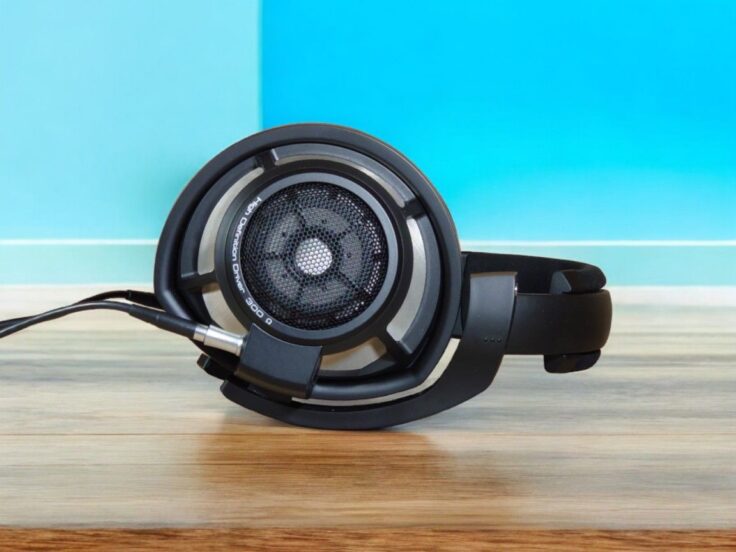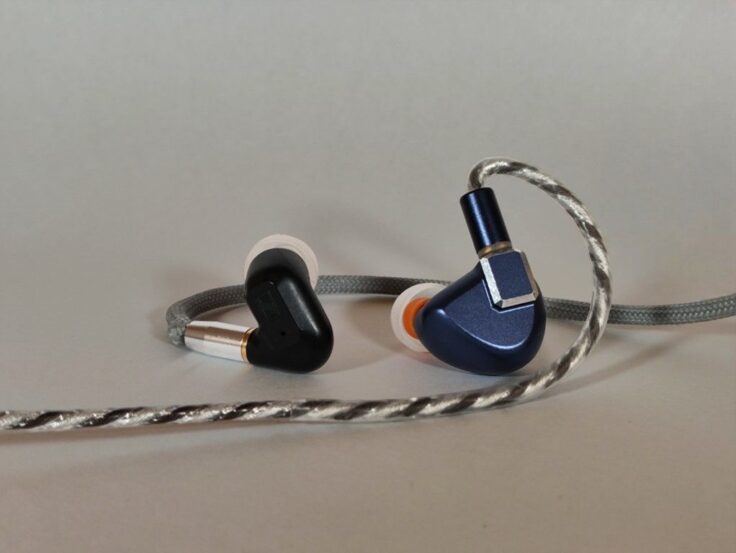The HD800 was launched in 2009. It was a completely new approach from Sennheiser. There was a new ring-shaped driver with a big hole in the middle. The design was something the world had never seen. Soon it became the reference headphone. The HD800 became known as incredibly detailed and technically able.
However, some found it clinical and cold sounding.
Discussions about amplifier-matching ran hot on the forums. Cables and sources too, of course. Sennheiser even chose to make an amp themselves to accommodate the difficulties and released the HDVD600/800 (without and with an onboard DAC, respectively). When I tested it I concluded that Sennheiser had made the perfect amplifier for the Beyerdynamic T1, but not so much for the HD800.
Even though the right amplifier, source and cable helped alleviate the issues, there was one thing that seemed impossible to get rid of: The notorious treble peak.
The community set out on a mission to mod the HD800 to perfection. There were always tradeoffs.
Finally, Sennheiser decided to do their own mod and released a rather sophisticated and elegant solution in the successor, the HD800S. Launched in 2016, it was almost identical to the HD800. The primary distinction between it and the predecessor lies in the black colour and, very importantly, some strategically placed material in the ring driver’s centre: There’s a ring-shaped material closer to the ear – which is the top of the hole, and some black material on the bottom, creating a cylindrical container with a hole.
Here are some pictures of the HD8XX, a Drop exclusive variant, which presumably has the same resonator chamber as the HD800S, but with some black material on the woven mesh surrounding the driver.
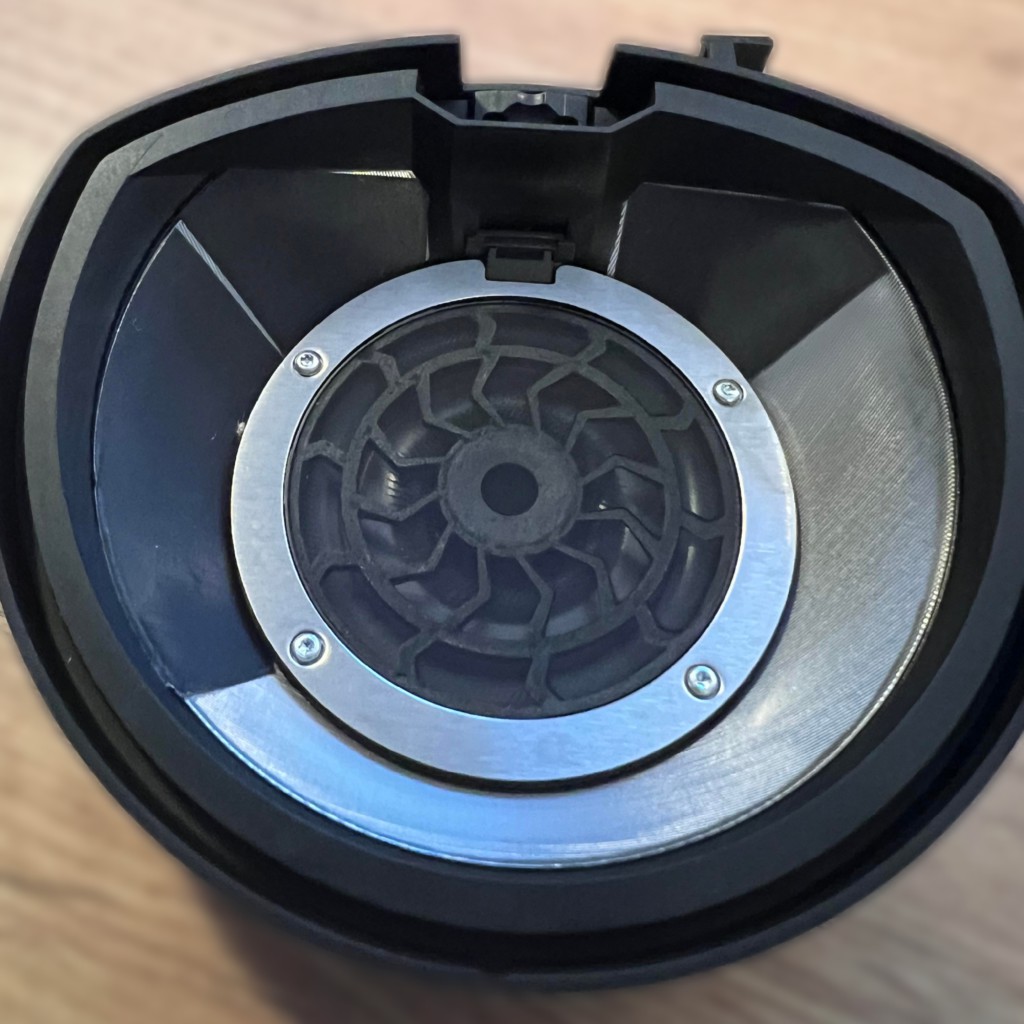
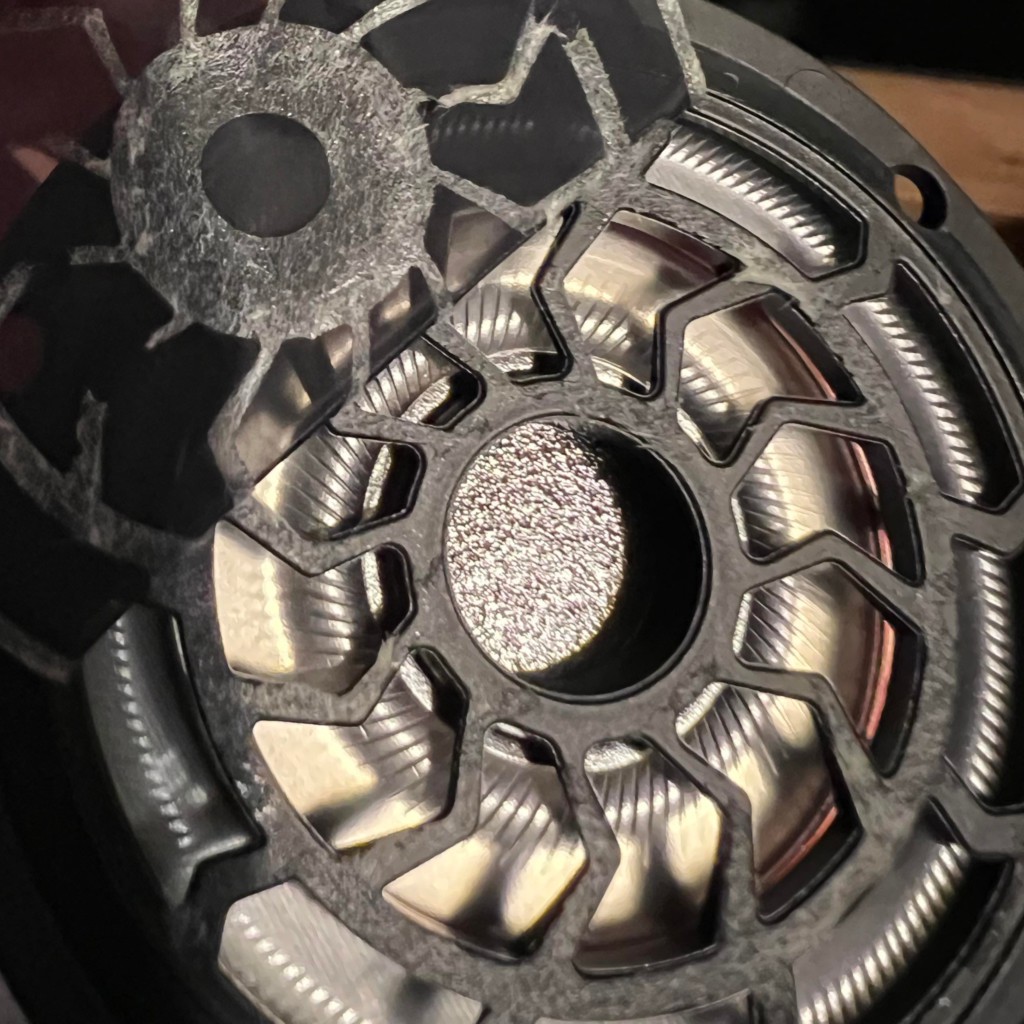
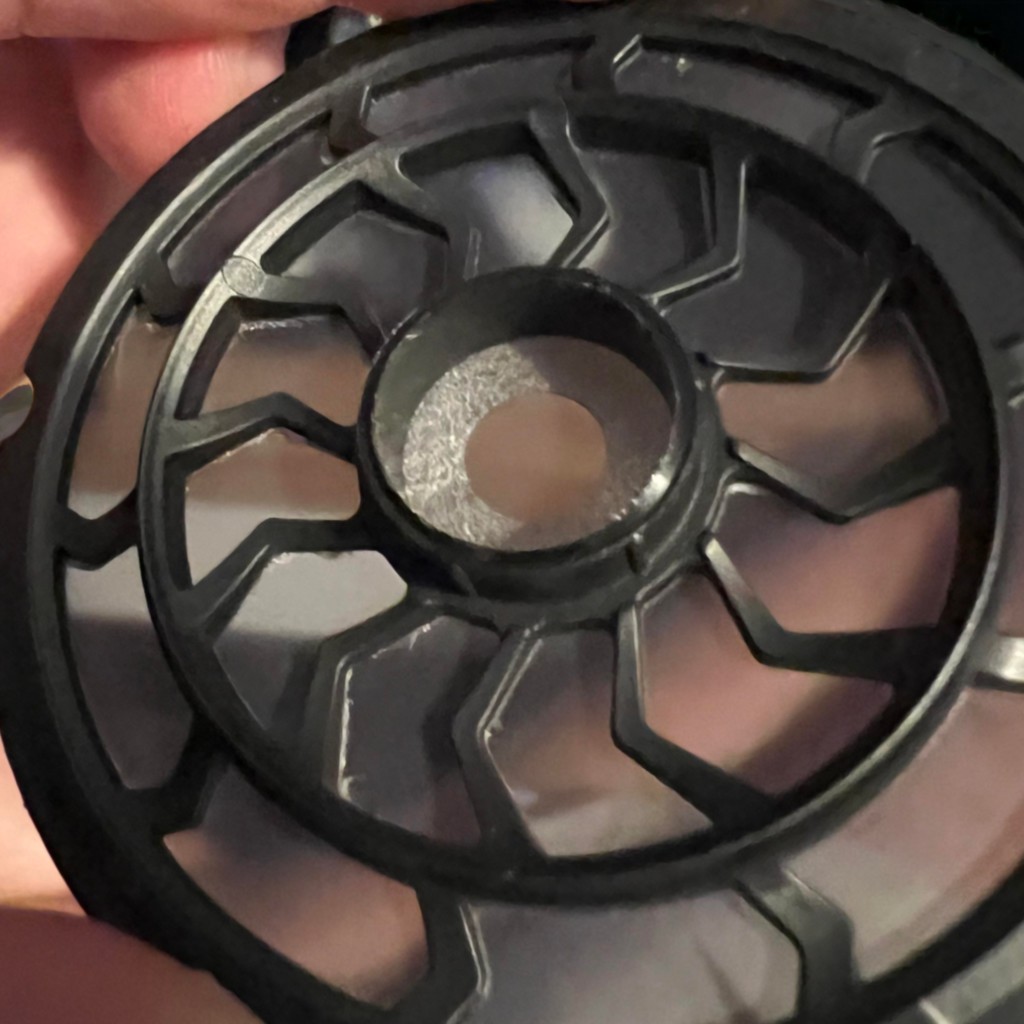
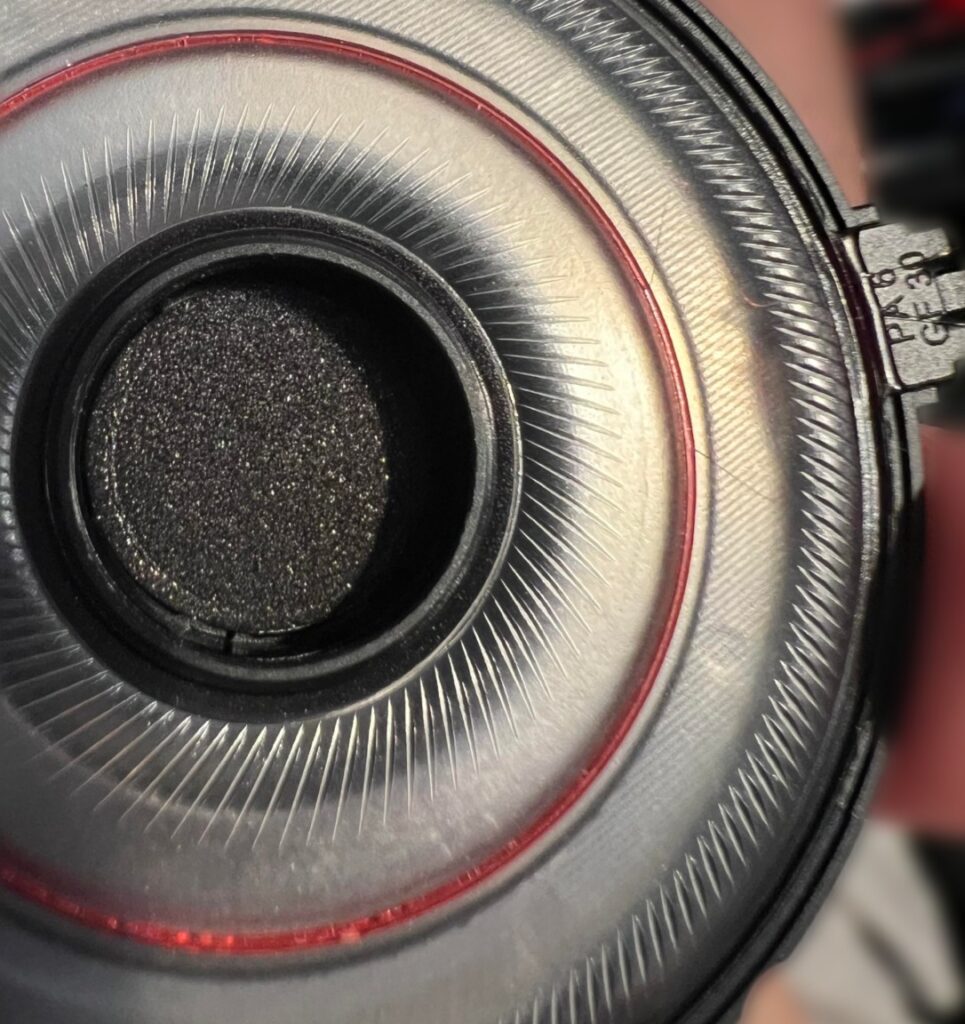
This addresses the said notorious treble peak issue. There is created a resonance chamber similar to what is known as a Helmholtz resonator.
A Helmholtz resonator is a container with an opening, shaped so that resonance occurs when the container is struck by a tone of a certain frequency (pitch). The resonant frequency is determined by the volume of the container and the design of the opening.
An empty bottle acts as a Helmholtz resonator. When you blow over the opening, a broad-spectrum signal is formed, but only the part of the signal that “matches” the resonance frequency is amplified and you get a pure tone.
In the HD800S, however, the resonance chamber is used to reduce some frequencies rather than to amplify them.
In architectural acoustics Helmholtz resonators are used to reduce undesirable low frequency sounds by building a resonator tuned to the undesired frequency, which in term eliminates it. This is exactly what the resonator does in the HD800S.
The headphone enthusiast community took the release of the HD800S as a challenge and rather than ditching their HD800’s they started to imitate the Sennheiser solution. In France, an enthusiast came closer to the HD800S mod than anyone else. This mod became known as the “French mod”, and the unit placed in the driver’s centre was called the Super Dupont Resonator aka SDR. It’s a small cylindrical unit made of various materials with a hole in it, creating a reasonable chamber quite like the HD800S solution. First they used a specific IEM tip cut to fit. Later they made a hollow “sandwich” with creatology foam with a hole on top, a felt ring in the middle and thick paper (bristol) at the bottom. The central name in developing and sharing this mod was a French enthusiast with the nickname Sorrodje who is active on superbestaudiofriends.org (aka SBAF) and the French forum tellementnomade.org. Links to SBAF can be found at the end of this article.
Here’s an image by Sorrodje, showing the black creatology foam, the brown felt and the thick paper which makes up the latest version of the SDR module:
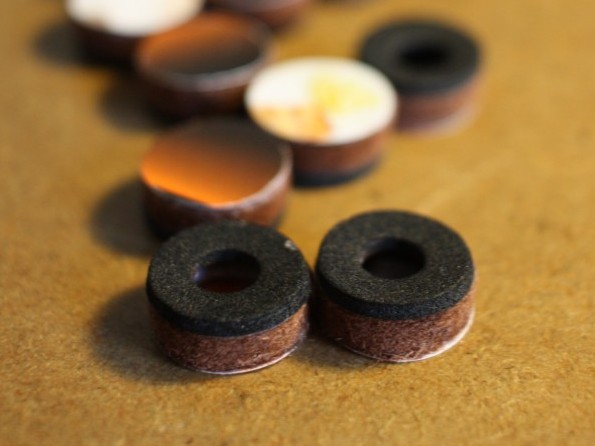
My personal HD800 with serial number 28xxxx is equipped with an SDR module. I bought it from Sorrodje directly via SBAF. I also have Dekoni Fenestrated Sheepskin pads. I unfortunately don’t have the original pads and my comparison is thus a comparison between my stock HD800S and an HD800 with SDR module and skin pads. What’s doing what is impossible to say for certain. For what is worth, here are some listening impressions:
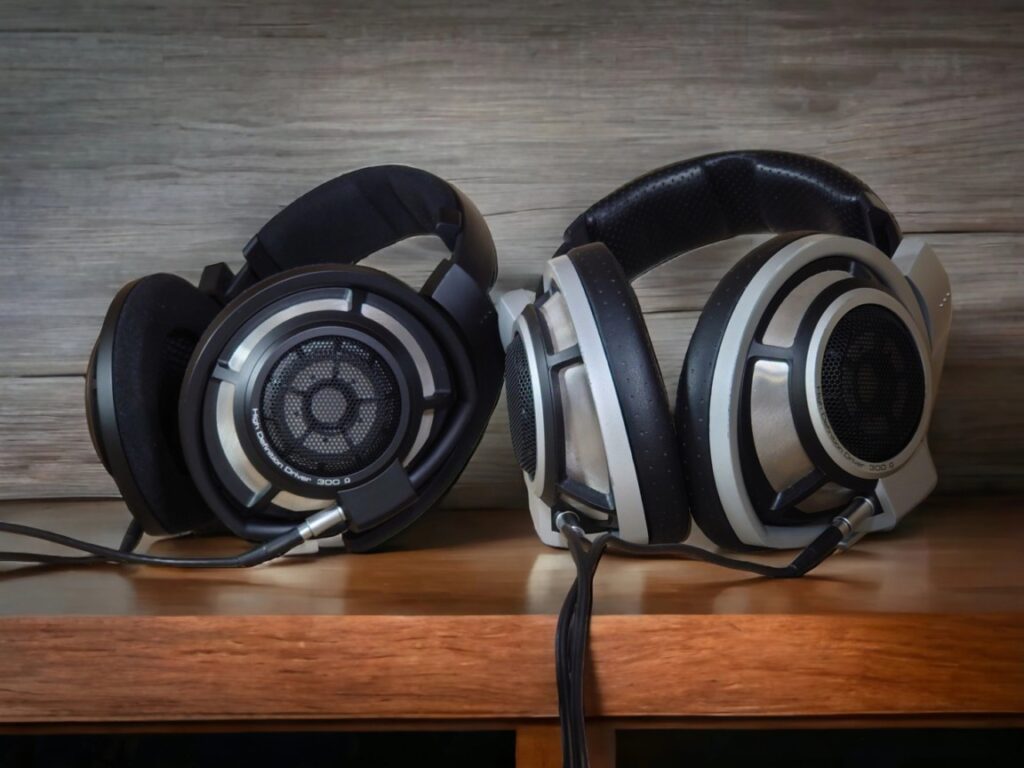
LISTENING COMPARISON
SOLID STATE
I used the Questyle CMA800R amplifier with both. This amplifier was made for the HD800 and it is a very good match with both headphones. The cables were two identical Sennheiser original cables.
Bordeaux State of Mind by Bendik Hofseth
Slow smooth jazz with electric guitar. It sounds perfect on the HD800 SDR, the guitar has a very nice glow, the space is big and the instruments are precisely positioned.
Moving over to the HD800S, it sounds very similar. The sound gets a little bit more diffuse; the instruments are maybe not just as precisely positioned in space. It got a sense of more air, but not in a way that makes the stage sound bigger. The guitar sounds a little bit drier and less glowing. They are very close, but I prefer the HD800 SDR.
Can’t You See by Susan Wong
Female vocals and acoustic instruments. Again the HD800S sounds a little bit more diffuse. The SDR (with sheepskin pads) sounds slightly warmer. The differences are very small. I might find the HD800S to be slightly more fatiguing.
Vivaldi 4 Seasons – Winter by the Norwegian Chamber Orchestra
The HD800S sounds a bit more airy and diffuse, whilst the HD800 SDR mod sounds slightly more precise and pinpointed. They’re not easy to tell apart, though.
Daddy Lessons by Beyonce
Beyonce’s vocals are slightly better focused with the SDR (with lambskin pads). The mid-bass is a little bit more pronounced. The deep bass might be a little bit stronger with the HD800S, though. Just a tad.
Bored by Deftones
This hardcore metal track has some nice riffs that expose certain frequency response differences. None of these headphones sound especially good with this track, I must say. If anything I prefer the HD800S by a hair because it has a tiny tad more bass.
Contradiction by Apparat
The HD800 SDR is slightly warmer because of a little bit more mid-bass, and the soundstage feels slightly more precise.
In conclusion, I do slightly prefer my lightly modded HD800 with the SDR module and Dekoni Fenestrated Sheepskin pads to the HD800S. What is Becca’s of the pads and what is not, is difficult to say. However, Dekoni’s own measurements show a drop in sub-bass with their pads compared to the original. HD800S has seemingly a tiny bit less deep bass but it is barely noticeable – if or when at all.
TUBES
The HD800 and HD800S is known to pair well with tube amplifiers, and I totally agree with that. At hand, I have the Woo WA22 transformer coupled tube amp and the Sparkos Gemini hybrid tube amp. Both have proven to be good matches with the HD800/S.
SPARKOS GEMINI
Bent into Shape by Todd Sickafoose
This track is really great for testing bass roll-off. The standing bass goes pretty deep and with both headphones, you can hear that it rolls off. If there is any difference between them it is not significant.
Magnetic North by Todd Sickafoose
The bass is nice and warm sounding, the HD800S gives a very nice presentation. The electric guitar has a nice glow. The HD800 SDR sounds very similar.
As Before by Olga Konkova
Both sound good. They sound very close.
Daddy Lessons by Beyonce
Again, they’re really close. Sometimes I think the HD800S has a bit more bass, but to be honest it’s not much to write about.
I continue through my playlist and there isn’t really much to add. They are almost identical sounding. There are only small nuances of differences from track to track.
WOO WA22
So I am curious whether the Woo WA22 amp drives them in slightly different directions, but no. I get the same relative results as with the Sparkos Gemini. They’re just too close to write down any meaningful opinions of their differences. Subtleties almost not worth mentioning sets them apart.
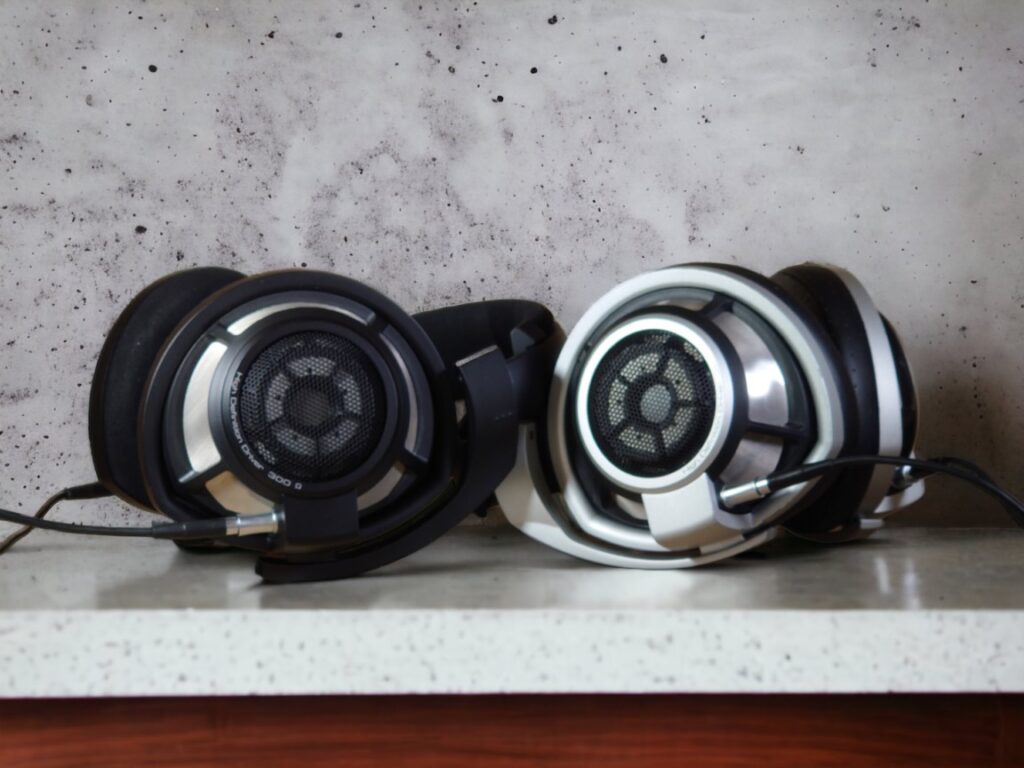
CONCLUSION
The main takeaway is this: The difference between these two headphones is marginal. I found it easier to spot the difference between them with the solid-state Questyle amp than with the two tube amps. In my experience, tube amplifiers have a very positive influence on the sound and the tonality of the HD800/S. The tubes make the HD800/S sound more organic, and less hot in the higher frequencies. Maybe the tubes had a relatively stronger effect on the HD800S than on my HD800 with SDR mod and Sheepskin pads.
If anything I slightly prefer the HD800 with the SDR mod and the Fenestrated Sheepskin pads. Sometimes it feels a little bit warmer, and a little bit more precise with the imaging. But again, the differences are marginal.
You can check out the HD800S on Amazon here.
Any purchase you make on Amazon or Linsoul with any of our affiliate links will give us a small provision at no cost to you.
We only get a provision for items that are not returned, so there’s no incentive for us to recommend something that’s not good.
Linsoul : Headphones, Earbuds, Wireless Earbuds, Desktop DAC/AMP, Portable DAC/AMP, Digital Audio Players,
Amazon: Headphones, IEMs, Headphone Amplifiers, Home Audio or Anything else.
.
If you enjoyed this article or other content on The Headphoneer, you might consider leaving a small donation to keep this website up and running. No donation is too small. Thanks for supporting us!
If you like our work please follow us on Instagram, Facebook and Twitter , it will help us grow. Sharing is caring 🙂
Further readings on the SDR mod:
SPECIFICATIONS SENNHEISER HD800S
- Over-ear, open-back design
- Transducer type: Dynamic driver
- 56mm Ring Radiator dynamic transducer system
- Sensitivity: 102 dB (SPL @ 1 V)
- Impedance: 300 Ω
- Frequency response: 4 Hz – 51,000 Hz
- Total harmonic distortion (THD): < 0.02 % (1 kHz 1 Vrms)
- Magnetic field: 10.5 mT
- Cable connector on headphones: Proprietary connectors.
- Cables: 1×3 m cable with 6.35 mm jack plug and 1 x 3m cable with balanced 4.4mm Pentaconn jack plug
- Weight 330 g
- Made in Germany.





